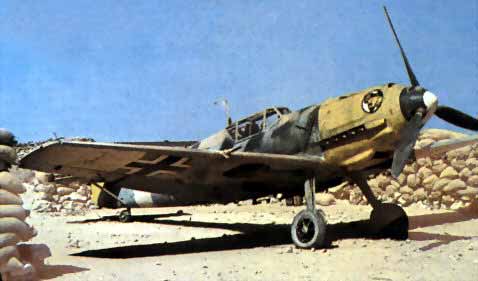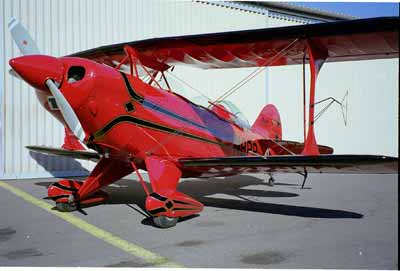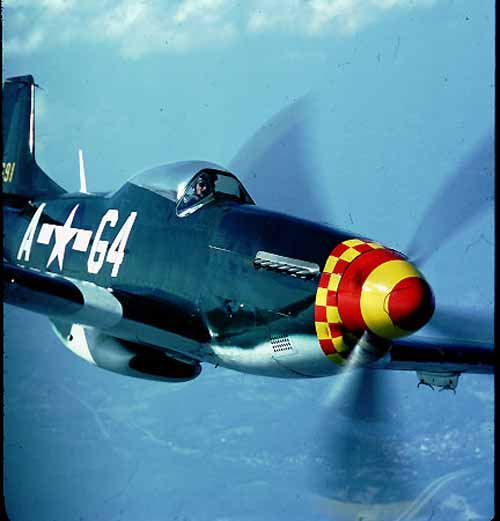PAGE TWO
It's difficult (and editorially dangerous) to make generalizations.
But let's make one: since many true antique airplanes were designed
in an era of big grass runways, in many situations they can be all
but uncontrollable on paved runways. Even those designed with tailwheels
have questionable brakes, limited tailwheel steering, limited rudder
control, high CG’s
and generally require the pilot not do any stupid, like landing crooked
or letting it get ahead of him on the runway.
 |
Nothing like a C-3 with a
tailskid to make you appreciate modern handling. Turbulence behind
a pigeon on takeoff is something to be reckoned with. |
Back in the days when tailskids were in vogue, it
worked to the designer's advantage to set up landing gear geometry
so that plenty of weight was nailing that tail skid to and, in some
cases, into. the ground. A bird with a tailskid behaves like it's dragging
an anchor because it’s
slightly digging into the grass. Not only does it slow down almost
immediately, but it keeps the tail where it's supposed to be.
Take the same airplane and put a tailwheel in place of the tailskid,
line up on pavement and what you have is a rudder-oriented exercise in
futility. With the CG that far back, the only time the airplane is really
stable is when it's rolling directly backwards (honest)!
To make matters a whole lot worse, the brakes—assuming the airplane
had any—were practically useless and it wasn't unusual for a
fat fuselage to completely blanket the rudder in a tail-down position.
When those mothers decided to go, you might as well cross your legs
and open a beer because, at that point, you're nothing but a spectator.
They don't fly any better today than they did then and pavement is
their real enemy.
Writer/barnstormer extraordinaire, Richard Bach, wrote many times about
his old Parks biplane and how it dearly loved to go whooping off in one
direction or another, generally dragging a wingtip and eventually breaking
a spar. I remember being checked out in a D-145 Monocoupe and voluntarily
giving up the exercise after three landings on pavement. I knew it was
just a matter of time before my mind was going to zig when the airplane
zagged and it would be all over. Does that type of handling automatically
give a prowess edge to the guys who drive old-time and sometimes underpowered
hardware?
Maybe, but maybe not. Consider this: probably the most classic case
of bad landing gear geometry is the Messerschmitt 109. Here was a high-performance
airplane designed specifically for use on a big square grass field
where crosswind didn't exist. With the gear so far forward and canted
at a goofy angle, everything worked against it. Then, to make matters
worse, if you nailed the outside brake on a swerve, it would twist
the gear leg in the wrong direction, tightening the swerve in a gear-folding,
wing-wrinkling maneuver known as "Willy's Revenge."
 |
As operational fighters went
the Bf 109 was about as evil on the ground as they come. |
BILL HARRISON HAD ABOUT FIFTY HOURS IN HIS 109 when a combination of
hydraulic problems and bad luck sent him skittering down a Texas runway.
He was probably the most successful American Messerschmitt pilot at that
point. He always admitted every takeoff and landing was an experiment
in survival and he was just waiting for his luck to run out. Actually
his luck didn't run out, but the airplane's did. Bill doesn't receive
anywhere near the credit he should for going that long before the curse
of Messerschmitt got him. Where does that place the Messerschmitt pilot
in the prowess totem pole, since each landing was a supreme test of his
ability? And his luck.
 |
The Pitts reputation is built
on it's supposed bad manners on the runway, when really all it
wants is to be landed straight and left alone. Unfortunately,
pilots can't seem to do that. |
Pitts pilots are known far and wide for their ability
to tap dance while keeping that little s.o.b. on the centerline. In
actuality, the Pitts has a funny personality. On the pavement, the
central part of the flight envelope is so narrow it's hard to keep
both feet in it at the same time. Given the slightest encouragement,
the Pitts just loves to wander over into the margin of error in either
direction, all the time giggling about the fits it’s giving the
pilot. But once the Pitts is out into that margin of error, it doesn't
want to get hurt any more than the pilot does because the plane gives
him more control than he'll over possibly need to keep out of the bushes.
The margin to recover after getting seriously screwed up is huge. Besides
its ability to recover on the ground, in the air the Pitts exhibits
the finest slow speed control of any non-STOL airplane. On top of that,
it has so much power that it can yank you out of almost any bad situation.
So, what does this all say about the reputation Pitts pilots carry
around? It’s hard to keep in the central envelop but easy to save (assuming
you know what you’re doing) once you get it screwed up. Super
pilot or not? We vote, no because the airplane gives the pilot so many
tools to make things right.
And then there's the big old lovable Stinson L-5, bhe Baby Huey of the
liaison set, the L-5 does everything slow. The L-5 is a machine you can
learn to love for its round edged personality ... until you lose it.
The central envelope is super-wide. You can flip-flop around in any old
way you want but when you cross over that first boundary into that margin
of error you'll find you're out there all by yourself, because the airplane
isn't going to help you one damn hit. The original bladder tube brakes
are next to useless, especially, if you're equipped with the big 10 x
6 tires. And most L-5 tail wheels have worn to the point that the best
thing that can be said about them is that they keep the bird's tail out
of the dirt.
It doesn't take much crosswind for you to discover the L-5's tail (and
most Stinsons for that matter) is mostly fin and has very little rudder.
It definitely doesn't lend you any kind of helping hand and lets you
go running off towards the hinterlands at a cockeyed angle and all it
does is fan the air behind you. It's a classic case of an airplane with
an easy-to-fly reputation that doesn't take into account how cantankerous
it can be if you step over the line.
GO TO NEXT PAGE
|

